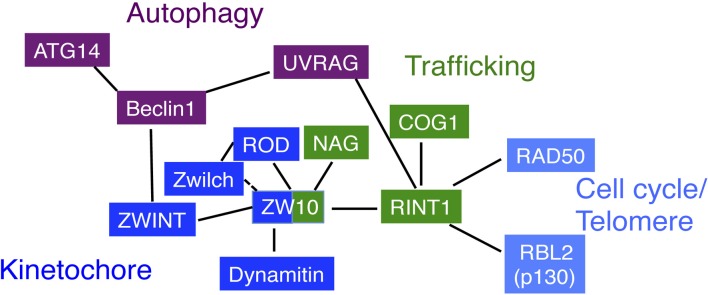Figure 3.

Correlation diagram of NRZ complex subunits. ZW10 is the center for the interactions. Through its N-terminal, putative coiled-coil region, it interacts with RINT1 for membrane trafficking (Hirose et al., 2004; Inoue et al., 2008), dynamitin for recruiting the dynein-dynactin complex (Starr et al., 1998; Inoue et al., 2008), ZWINT for the association with kinetochores (Wang et al., 2004; Kops et al., 2005). The C-terminal region of ZW10 likely interacts with NAG and ROD (Kraynack et al., 2005; Aoki et al., 2009; Civril et al., 2010). The interaction of Zwilch with ZW10 is not tight in the absence of ROD (Civril et al., 2010). On the other hand, RINT1 interacts with COG1 through its N-terminal, putative coiled-coil region (Arasaki et al., 2013). This interaction mode may be a common for the interactions of CATCHR family members. The N-terminal region is also responsible for the interaction with UVRAG, but in this case, RINT1 keeps the binding to ZW10 (He et al., 2013). The RINT1 interacts with RAD50 and RBL2/p130. UVRAG interacts with RINT1 under basal conditions and, upon starvation, dissociates from RINT1 and interacts with Beclin1. Of note is that Beclin1 during mitosis interacts with ZWINT, a ZW10 partner.
